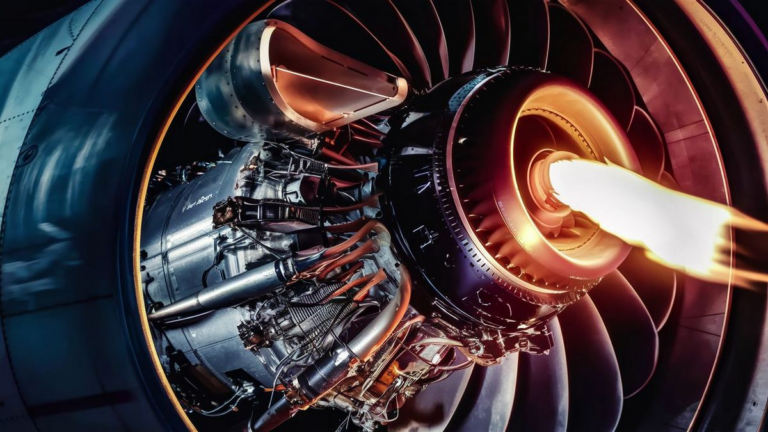When it comes to the intricate design and functionality of aircraft engines, the outer casing plays a pivotal role in ensuring optimal performance, safety, and efficiency. The outer casing, also known as the engine cowling or nacelle, encapsulates the engine components, providing protection against external elements while also contributing to aerodynamic performance.
The Significance of Outer Casing
The outer casing serves multiple critical functions within the framework of an aircraft engine. Firstly, it protects the internal components from environmental factors such as rain, hail, dust, and debris encountered during flight. Additionally, it shields the engine from potential damage caused by bird strikes or foreign object debris (FOD) ingestion, which can compromise engine integrity and safety.
Moreover, the outer casing aids in managing airflow around the engine, optimizing aerodynamic performance and reducing drag. By carefully shaping the cowling and integrating features such as air intakes, exhaust outlets, and thrust reversers, engineers can enhance overall efficiency and fuel economy.
Materials and Construction
The materials used in constructing the outer casing of aircraft engines are chosen meticulously to withstand the harsh conditions experienced during flight. Common materials include lightweight yet durable alloys such as aluminum, titanium, and composite materials like carbon fiber reinforced polymers (CFRP).
Modern manufacturing techniques, including precision machining and advanced composites layup processes, ensure that the outer casing meets stringent quality standards while remaining lightweight and structurally robust. Additionally, thermal management solutions may be integrated into the design to dissipate heat generated by the engine efficiently.
Integration with Engine Systems
Integration of the outer casing with other engine systems is crucial for seamless operation and performance. This involves aligning the cowling with fuel delivery systems, lubrication systems, and auxiliary power units (APUs) to facilitate maintenance, accessibility, and overall system efficiency.
Furthermore, advancements in technology have led to the incorporation of innovative features such as noise reduction mechanisms and thermal insulation within the outer casing, enhancing passenger comfort and reducing environmental impact.
Regulatory Compliance and Safety
Regulatory bodies such as the Federal Aviation Administration (FAA) and the European Union Aviation Safety Agency (EASA) impose stringent guidelines concerning the design, manufacturing, and maintenance of aircraft engine components, including the outer casing. Compliance with these regulations is paramount to ensure the safety and airworthiness of aircraft.
Engine manufacturers and operators adhere to rigorous testing protocols, including static and dynamic load tests, environmental testing, and fatigue analysis, to validate the structural integrity and reliability of the outer casing throughout its lifecycle.
The outer casing of an aircraft engine embodies a delicate balance between structural integrity, aerodynamic performance, and operational efficiency. As aviation technology continues to evolve, engineers strive to develop innovative solutions that enhance safety, reduce environmental impact, and elevate the overall passenger experience.
Impact of Outer Casing on Fuel Efficiency
Efficiency in fuel consumption is a critical aspect of aircraft operations. The design of the outer casing significantly influences the aerodynamic performance of the engine, thereby affecting fuel efficiency. Engineers focus on reducing drag and optimizing airflow around the engine to minimize fuel consumption during flight.
Aerodynamic Considerations
Streamlined contours and carefully designed air intakes and exhaust outlets play a crucial role in minimizing aerodynamic drag. By reducing drag, the outer casing contributes to fuel savings by requiring less engine power to maintain a given speed or altitude.
Environmental Impact
Improved fuel efficiency not only benefits the airlines economically but also reduces the environmental footprint of air travel. Lower fuel consumption means reduced emissions of greenhouse gases and pollutants, contributing to efforts aimed at mitigating the aviation industry’s impact on climate change.
| Material | Properties | Applications |
|---|---|---|
| Aluminum | Lightweight, corrosion-resistant | Mainly used in low-temperature environments |
| Titanium | High strength-to-weight ratio, heat-resistant | Utilized in high-temperature sections of the casing |
| Carbon Fiber Reinforced Polymers (CFRP) | High strength, lightweight | Commonly used in modern aircraft for superior structural performance |
Frequently Asked Questions
- What role does the outer casing play in aircraft safety?
- How does the integration of the outer casing with other engine systems enhance operational efficiency?
- What are some key regulatory bodies involved in ensuring compliance with safety standards for aircraft engine components?
- How do advancements in outer casing design contribute to reducing the environmental impact of aviation?
See also:






